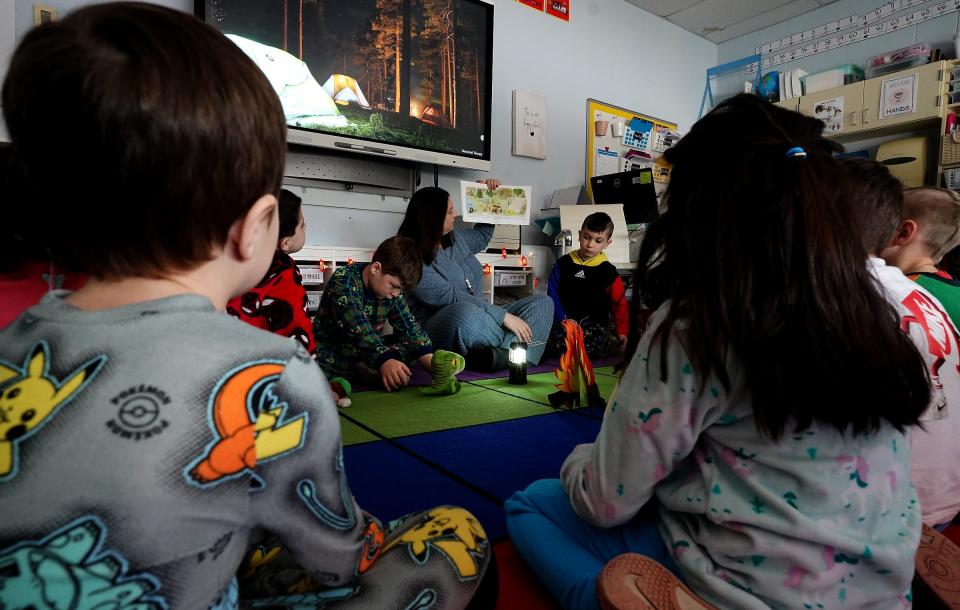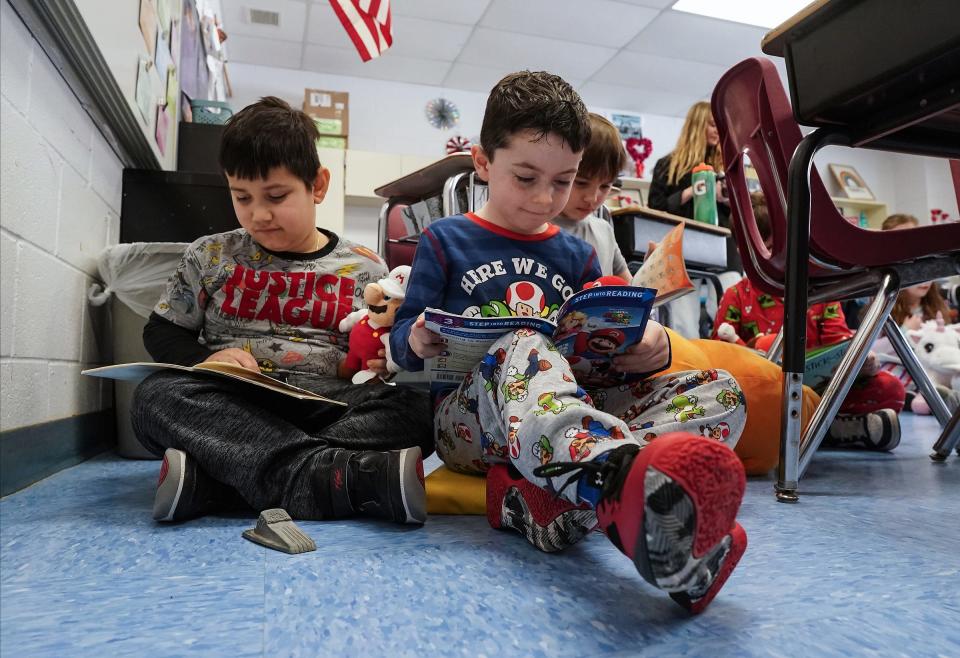NY schools await details on 'science of reading' training for teachers
- Oops!Something went wrong.Please try again later.
Two different efforts to require the science of reading in New York schools aim to improve the state's low reading scores by making sure teachers are trained on evidence-based practices.
Both efforts to codify the science of reading — one in Gov. Kathy Hochul's proposed budget and the other in a pair of bills in the state Legislature — will rely on the state Education Department to guide schools on how to incorporate it and determine the details of the training teachers should receive.
"A lot will depend on how the Education Department carries out its role of providing some clarity about what these best practices would look like, and how they would evaluate school districts," Robert Lowry, deputy director for advocacy, research, and communications at the New York State Council of School Superintendents, said of Hochul's proposal.
In an email a spokesperson said SED unequivocally supports the science of reading and that it released a series of briefs on the science of reading during a webinar with educators throughout the state.
The briefs, developed by Nonie Lesaux, an education professor at Harvard, outline the science of reading's six major pillars: phonics, vocabulary, comprehension, fluency, oral language (being able to speak and listen), and phonemic awareness (hearing and understanding spoken words). They also cover activities in the classroom that support the development of the six pillars and how they differ by grade.
One of the briefs outlines the science of reading's overlap with the state's culturally responsive framework and social and emotional learning.
As its name implies, the "science of reading" refers to evidence-based instruction, though it doesn't refer to a specific program or curriculum, or an agreed-upon body of research. Some consider it synonymous with phonics instruction.
SED didn't respond to questions about whether it supports the two bills or Hochul's proposal but a spokesperson shared a statement that linked to the briefs and noted the department was examining state literacy requirements and getting feedback on what support is needed for literacy instruction around the science of reading.

Learn more: Hochul wants to require schools to teach phonics. Does 'science of reading' support it?
NYSUT would provide training under Hochul's proposal
Under Hochul's proposed budget, New York State United Teachers would get $10 million to train teachers on the science of reading, the bulk of which, a spokesperson for NYSUT said, would go toward paying instructors in the training arm of NYSUT.
"Teachers teaching teachers is the ideal path for ensuring that literacy instruction is up-to-date and effective," NYSUT President Melinda Person said in a statement. "This isn’t just another fad — it’s part of a national movement to update our practices and make sure educators can meet the needs of every child and help them develop a love of reading.”
SUNY and CUNY would also each get $1 million for teacher microcredential programs on the science of reading.
Lowry said the Council has heard from superintendents who've said they've already made changes in their literacy instruction that reflect the science of reading, but how much they will still have to change will depend on the guidance from SED.
Those districts said some of the challenges were the expense and some resistance from teachers, Lowry said.
Hochul's budget would require SED guidance by July
Hochul's proposed budget would mean a tight turnaround for SED to put out specific guidance on what it expects of districts and teachers.
Education Commissioner Betty Rosa would have to provide school districts with instructional best practices to teach the science of reading in pre-K through 3rd grade by July 1. The budget is due April 1, which would give the state Education Department three months to put out best practices for districts.
Districts would have to certify that their instructional practices and professional development for their teachers follows those best practices by Sept. 1, 2025, and each year after.
Lowry called the timeline "ambitious" and said the Council has heard some concerns about it — that it might be difficult for some districts that have more changes to make to their reading instruction to meet the September 2025 deadline.
State Sen. Shelley Mayer, a Yonkers Democrat who serves as chairwoman of the Senate Education Committee, said the timeline may need to be tweaked if SED or school districts need more time, but she hoped the changes would be on an "aggressive timetable."
"The goal is to get it done and to get it done sooner rather than later," Mayer said.
A NYSUT spokesperson said there weren't any major concerns about the timeline.

Negotiations will determine money for training, other requirements
Though the senate and assembly bills are separate from Hochul's proposal, it isn't uncommon for legislators to try to roll existing bills into similar efforts in the budget, said Mayer.
The advantages of combining the efforts in the budget are that funding would already be tied to it and legislators already know Hochul would sign it, Mayer said.
State Assemblymember MaryJane Shimsky, D-Dobbs Ferry, said the bills and Hochul's budget proposal were largely trying to accomplish the same thing: addressing the state's problematic reading scores as quickly as possible.
But the bills are different from Hochul's budget in that there is no funding tied to them and they would prevent SED from approving of curricula that involves three-cueing, a method where students rely more on context clues and the meaning of words before sounding out words.
The bills and the budget also establish requirements for teachers in different grade levels. The bills require professional development for teachers in pre-K through 5th grade while Hochul's budget requirements address pre-K through 3rd grade teachers.
The details in the bills and the proposed budget are all subject to negotiation whether they're combined or not, Mayer said.
Shimsky said it'd be unlikely for the $10 million to get cut from the budget, but noted an effort among members of the Assembly to negotiate the amount— and ask for an additional $30 million.
What is asked of SED could also change.
Lowry noted Hochul's proposal wasn't as prescriptive as it could have been. It would require districts to show they're adhering to best practices outlined by SED instead of requiring districts to choose from select reading programs.
But in their current form, the bills would require SED to release a list of approved curricula.
Contact Diana Dombrowski at ddombrowski@gannett.com. Follow her on Twitter at @domdomdiana.
This article originally appeared on Rockland/Westchester Journal News: Hochul's budget, NY bills push 'science of reading.' What that means

